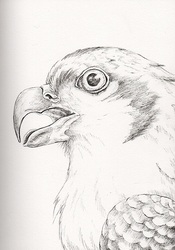Sign In
CloseTotem of the day is Ocelot! Don't talk too much about the goals you are working on in order to sustain the energy to complete it. If someone comes to you with confidential information, be sure to keep their information to yourself as requested. If you have been experience anxiety, now is the time to convert it into artistic creativity. Choose an artistic project that connects with you deeply and excites you to work on it. The Ocelot spirit guide is known for it's connection to courage, hope, instinct, creative expression, and success. Ocelot can come as a reminder that was can always find the light in the darkness. Draw on Ocelot for the courage to be prepared for anything and to defend yourselves against those that would attempt to harm you. Ocelot can aid in ridding parasitic individuals from your life. Follow your instincts to know which goals to pursue and remember that mistakes only aid to teach us and to continually evolve. Ocelot can be helpful when you need inspiration to complete many things. The Egyptian Goddess Mafdet, or Maftet, was often seen with the head of an ocelot or mongoose and was a protector against snakes and scorpions. In ancient Peruvian culture, they were also seen as a sacred creature to worship and are depicted in much of their art. People who connect with Ocelot have a knack for competition and always achieving better, but are not generally interested in sports. These individuals are often agile in mind and body with a wide variety of knowledge in many areas. At times, they have a natural gift for finding deals or treasures without using up much energy. These types are loyal and committed partners in relationships and often get their best work done at night.
Ocelot, Leopardus Pardalis, are carnivorous mammals belonging to the Felidae family that can live between 8 and 12 years in the wild. The word Ocelot comes from the Aztec word "Tlalocelot" which means field tiger. They are also known as the Painted Leopard or Dwarf Leopards. These small felines are covered in an array of distinctive rosettes, spots, and stripes. Each individual's pattern is completely unique with these dark markings over a tan, orange, and white pelt. Although called leopards from these markings, Ocelots are in a different subfamily than either Leopards or Tigers. Ocelots belong to the Felinae subfamily consisting of small cats while tigers and leopards belong to the Pantherinae subfamily. While Ocelots cannot roar, they are able to chuckle when excited or make muttering noises in communication with each other. An adult Ocelot grow up to around 40 inches tall and weigh up to 34 lbs. Males are generally larger than females. Ocelots are native to the Americas from areas of the United States and Mexico to Central and South America. They are the second largest spotted cats native to South America after the Jaguar. Ocelots have adapted to a wide range of habitats from tropical forests to coastal marches, savanna grasslands, and mangrove forests. The diet of an Ocelot consists of birds, rodents, monkeys, iguanas, rabbits, frogs, and crabs. They possess specialized teeth used to remove the fur and feathers of any prey they catch. Long, sharp incisors tear meat from bone while their back teeth are excellent at cutting the meat into smaller, digestible pieces. Ocelots do not like to waste and will hide their prey until they are hungry again. Being nocturnal, they will hunt at night from the ground as well as from trees. These cats are excellent climbers, agile hunters, and adept swimmers with no fear of water. Their large eyes give them keen vision. Ocelots will travel up to 5 miles in search of food. During the day, they will sleep in trees or hidden in bushes. Being territorial, they will defend a territory of approximately 56 square miles for males and 46 miles for females. It is common for male territories to overlap with many different females. Ocelots will mate throughout the year in the deep tropics. Ocelots will mate up to 5 or 10 times in a day. When courting, Ocelots are known to yowl to attract or warn others. A female Ocelot will give birth to between 1 and 3 babies called kittens. Weighing less than 12 oz at birth, these kittens are born with closed eyes which will open after 14 days. Kittens are weaned around 6 weeks old, but will continue to live in their mother's territory for up to 2 years before leaving.
Submission Information
- Views:
- 433
- Comments:
- 0
- Favorites:
- 1
- Rating:
- General
- Category:
- Visual / Traditional




